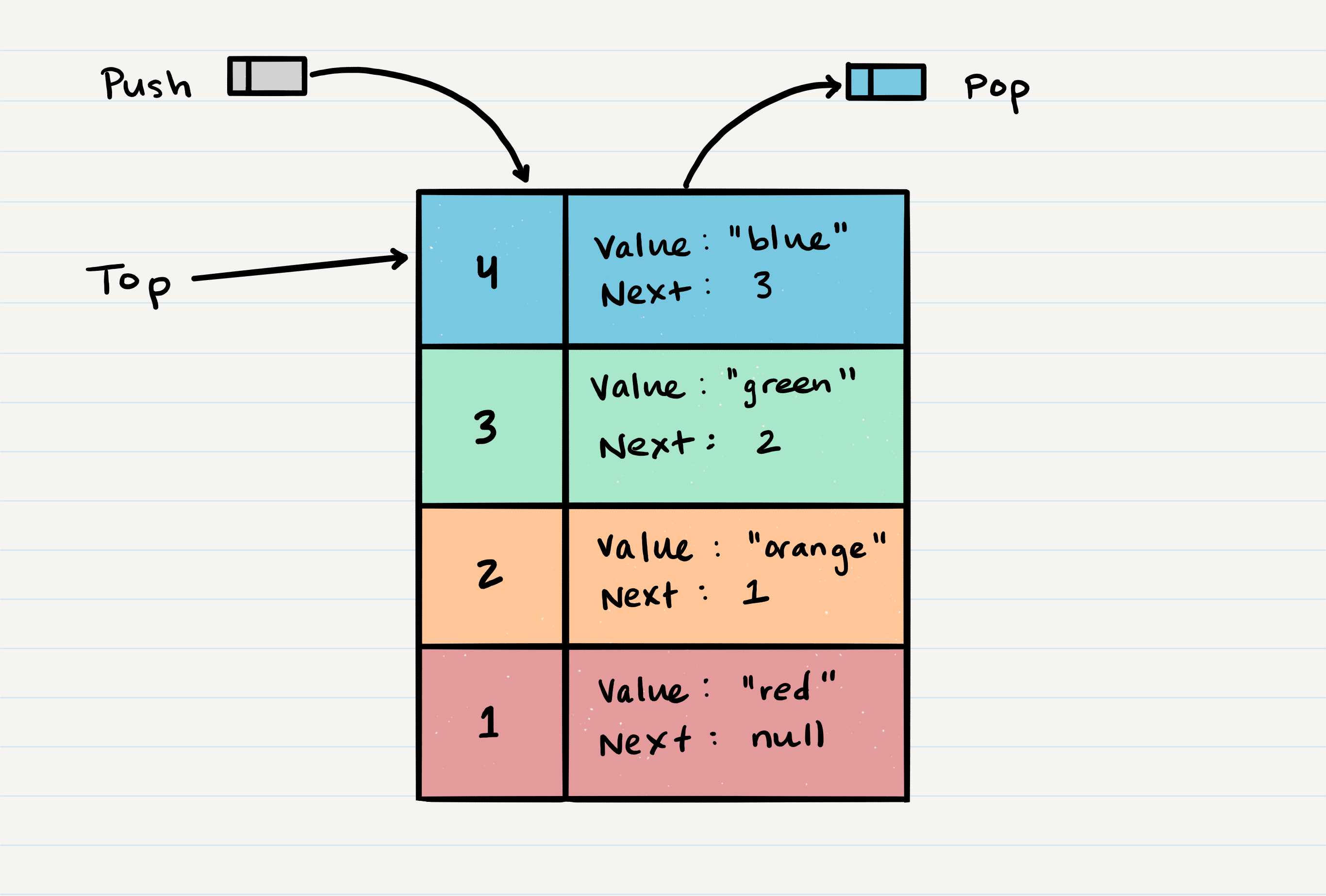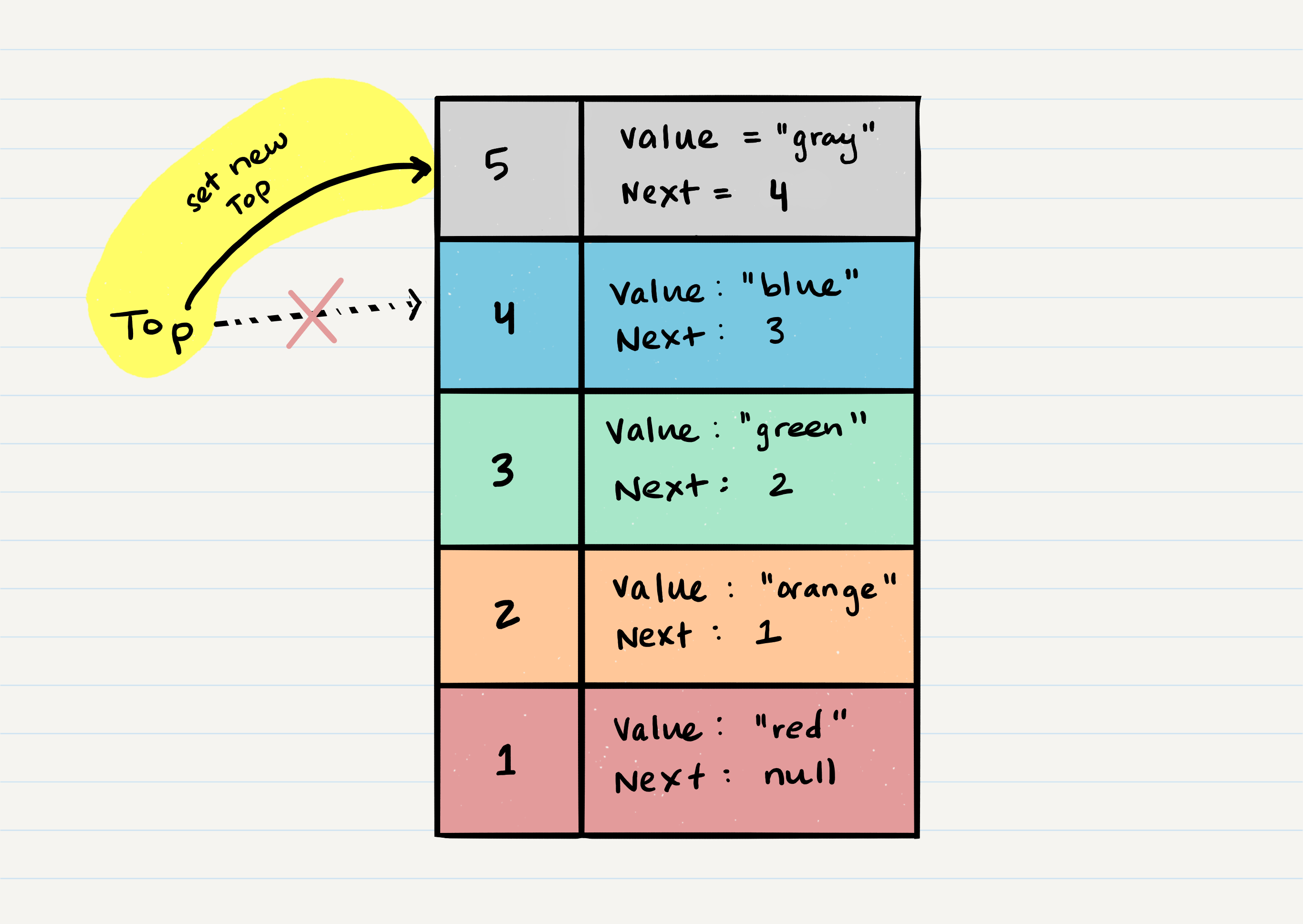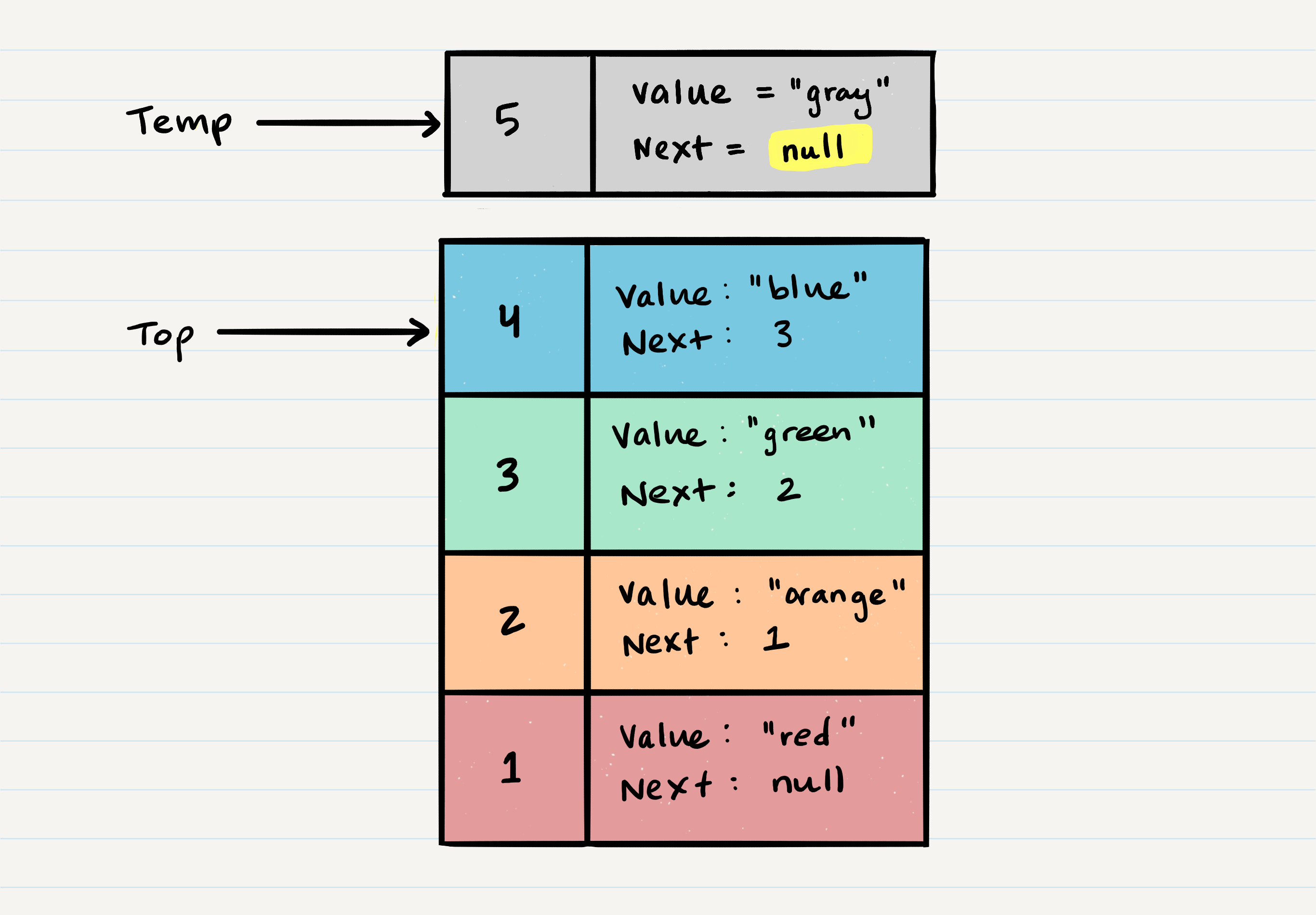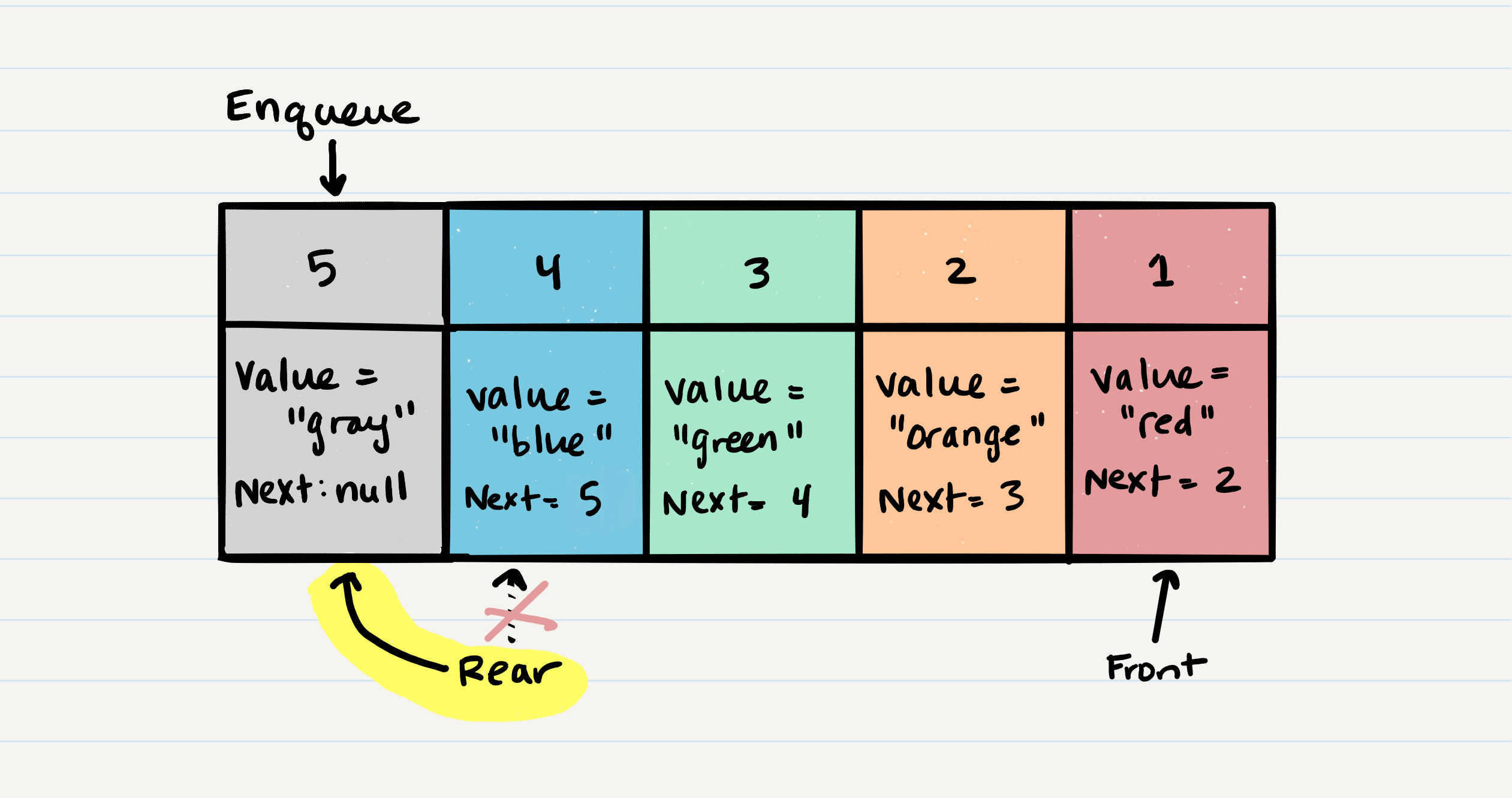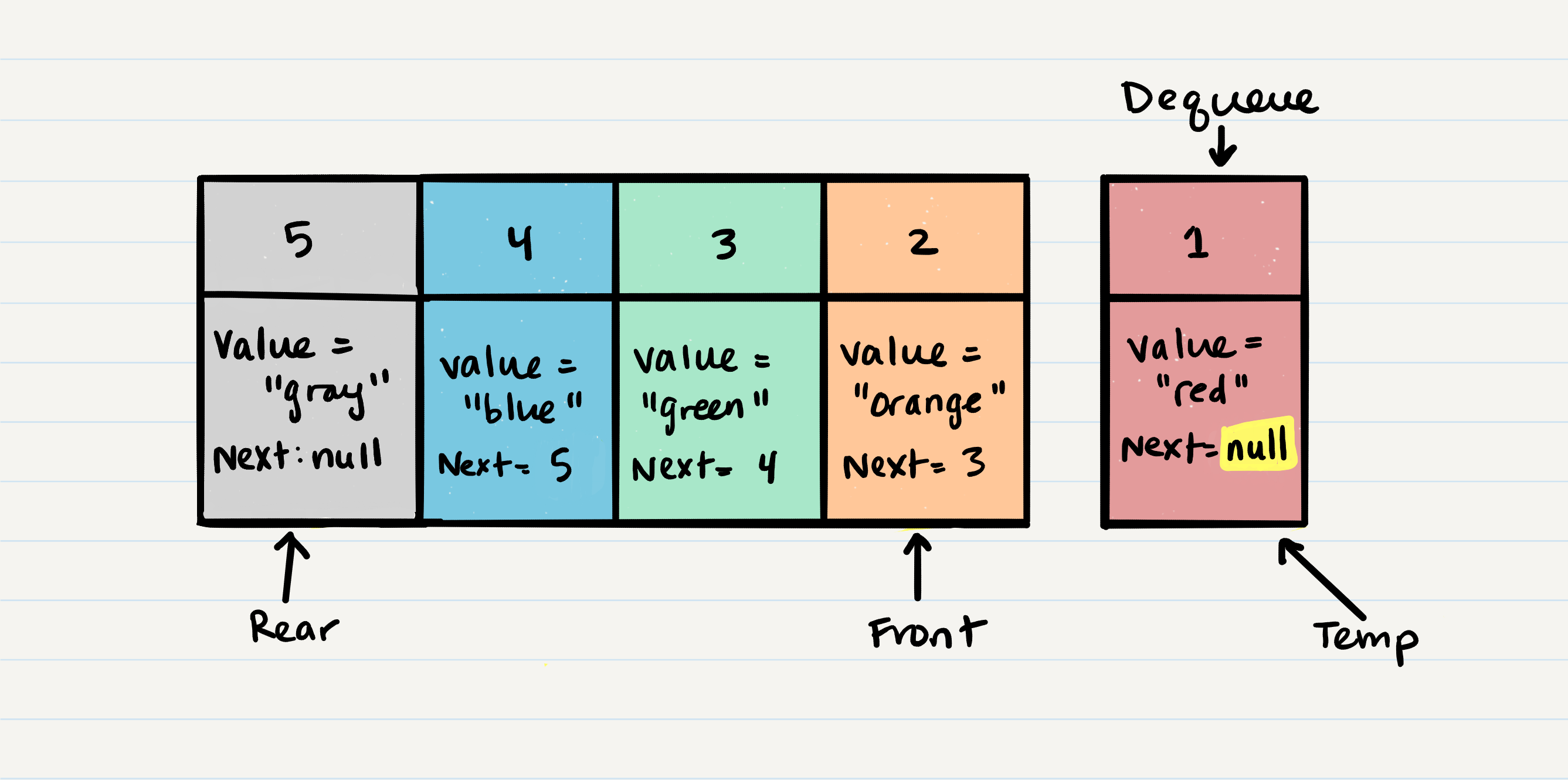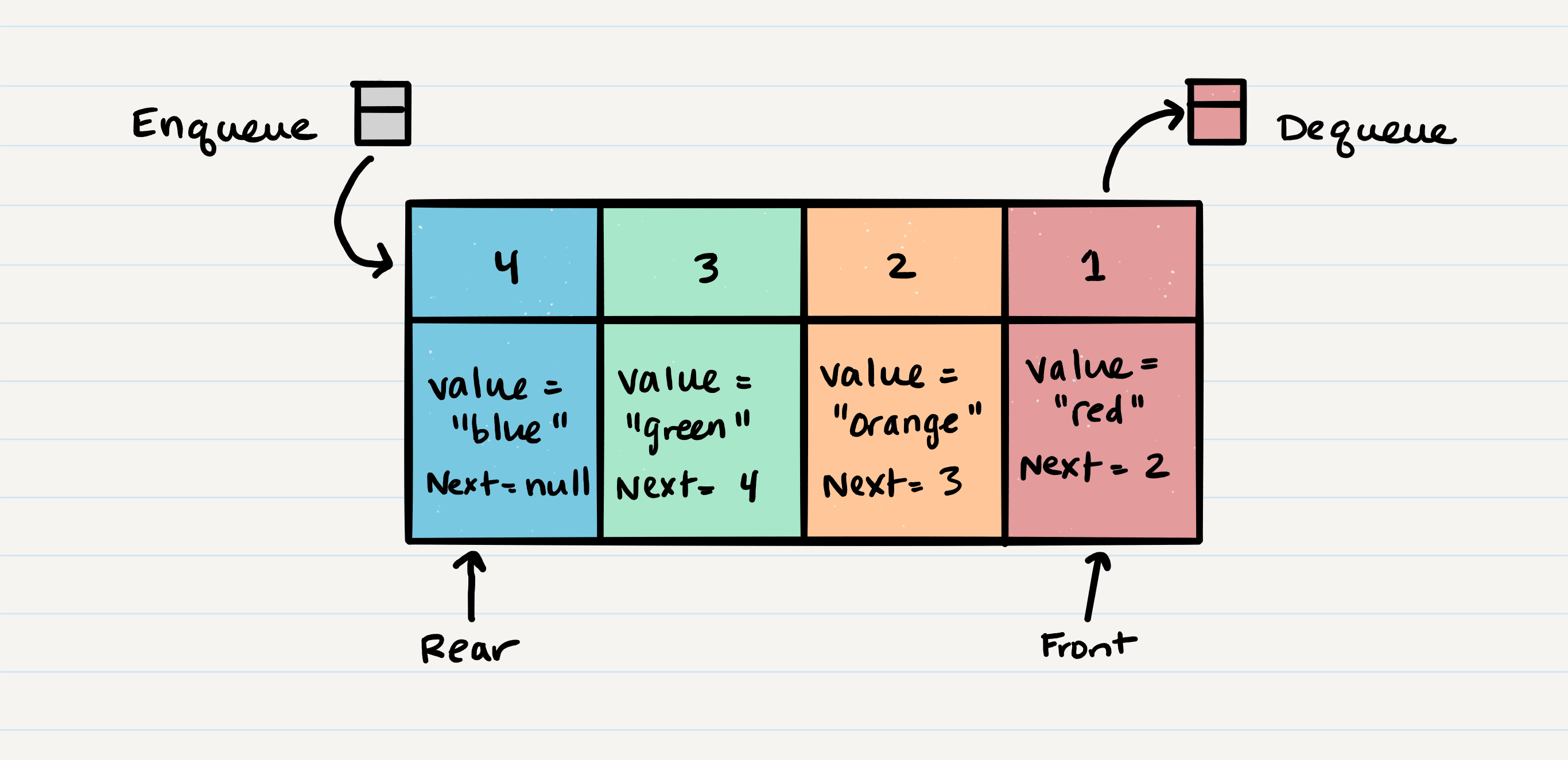Reading-notes
Stacks and Queues
A stack is a data structure that consists of Nodes. Each Node references the next Node in the stack, but does not reference its previous.
1- PUSH
Push - Nodes or items that are put into the stack are pushed
Pushing a Node onto a stack will always be an O(1) operation
When adding a Node, you push it into the stack by assigning it as the new top, with its next property equal to the original top.
Here is the pseudocode to push a value onto a stack:
ALOGORITHM push(value)
// INPUT <-- value to add, wrapped in Node internally
// OUTPUT <-- none
node = new Node(value)
node.next <-- Top
top <-- Node
2- Pop
( the action of removing a Node from the top)
thetop Node will be re-assigned to the Node that lives below and the top Node is returned to the user.
check isEmpty before conducting a pop. This will ensure that an exception is not raised.
Pop - Nodes or items that are removed from the stack are popped. When you attempt to pop an empty stack an exception will be raised.
return the value of the temp Node that was just popped off.
ALGORITHM pop()
// INPUT <-- No input
// OUTPUT <-- value of top Node in stack
// EXCEPTION if stack is empty
Node temp <-- top
top <-- top.next
temp.next <-- null
return temp.value
3- top
Top - This is the top of the stack.
Peek - When you peek you will view the value of the top Node in the stack. When you attempt to peek an empty stack an exception will be raised.
IsEmpty - returns true when stack is empty otherwise returns false
What is a Queue :
Enqueue - Nodes or items that are added to the queue. (O(1))
Dequeue - Nodes or items that are removed from the queue. (O(1))
Front - This is the front/first Node of the queue.
Rear - This is the rear/last Node of the queue.
Peek - When you peek you will view the value of the front Node
you want to check isEmpty before conducting a peek. This will ensure that an exception is not raised.
sEmpty - returns true when queue is empty otherwise returns false (O(1))
Stacks follow these concepts:
1-FILO (First In Last Out) 2-LIFO (Last In First Out)
